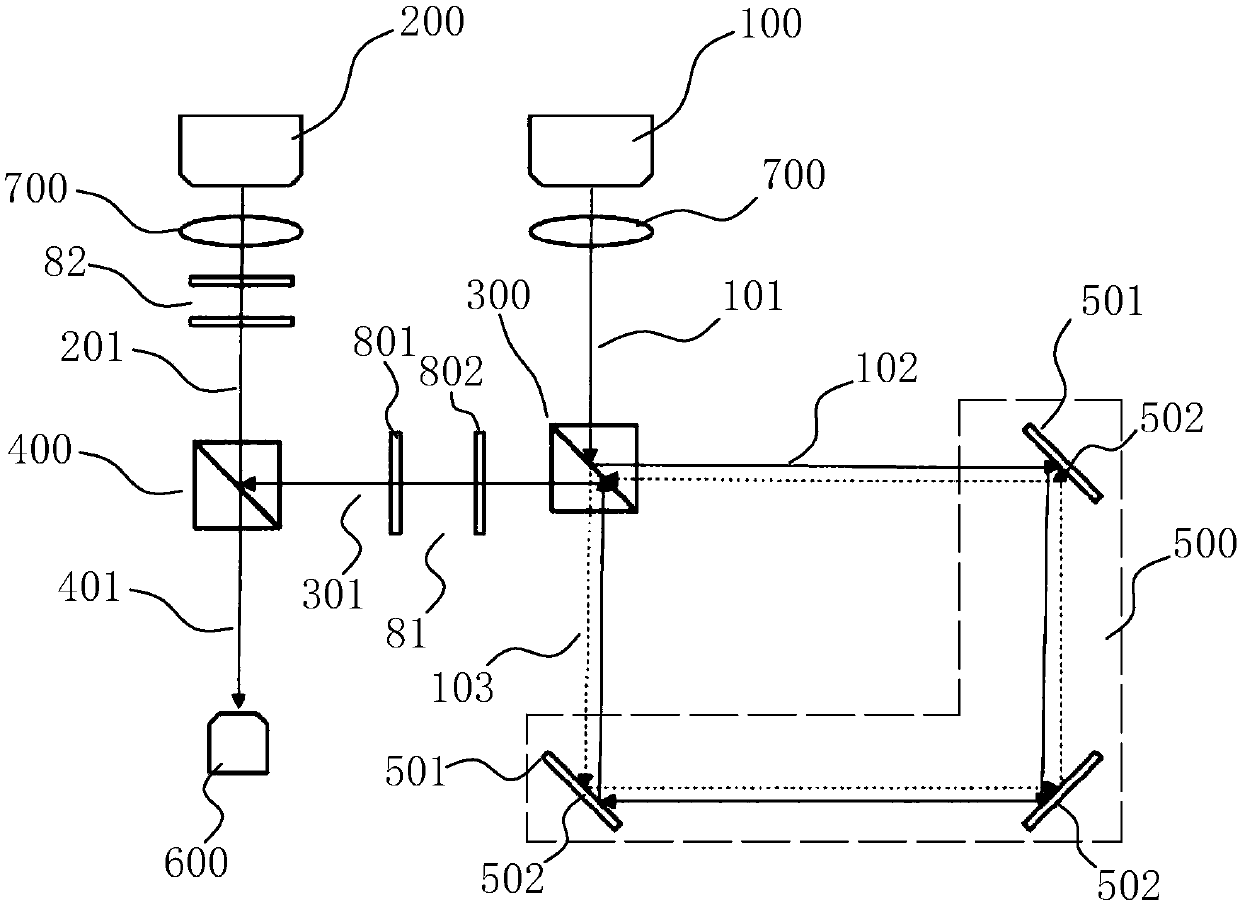Angular velocity measurement device and method, and carrier
A measurement device and measurement method technology, applied in the measurement field to achieve the effect of rapid measurement
- Summary
- Abstract
- Description
- Claims
- Application Information
AI Technical Summary
Problems solved by technology
Method used
Image
Examples
Embodiment approach
[0066] Preferably, in an embodiment of the present invention, the voltage signal generated by the high-bandwidth detector first passes through a low-pass filter whose bandwidth is half of the repetition frequency, and then is collected by a high-speed data collector, which can remove the In the non-coherent part, the continuous interference signal 401 is obtained directly, and the sampling period of the high-speed data collector can also be set arbitrarily.
[0067] In another embodiment of the present invention, the high-speed data collector directly collects the voltage signal generated by the high-bandwidth detector. At this time, the sampling period of the high-speed data collector is the repetition frequency of the local oscillator optical comb signal 201, and by adjusting phase to maximize the sampling signal-to-noise ratio.
[0068] The optical frequency comb signal is represented as a femtosecond-level carrier envelope pulse in the time domain, and the signal optical f...
PUM
 Login to View More
Login to View More Abstract
Description
Claims
Application Information
 Login to View More
Login to View More - R&D
- Intellectual Property
- Life Sciences
- Materials
- Tech Scout
- Unparalleled Data Quality
- Higher Quality Content
- 60% Fewer Hallucinations
Browse by: Latest US Patents, China's latest patents, Technical Efficacy Thesaurus, Application Domain, Technology Topic, Popular Technical Reports.
© 2025 PatSnap. All rights reserved.Legal|Privacy policy|Modern Slavery Act Transparency Statement|Sitemap|About US| Contact US: help@patsnap.com



